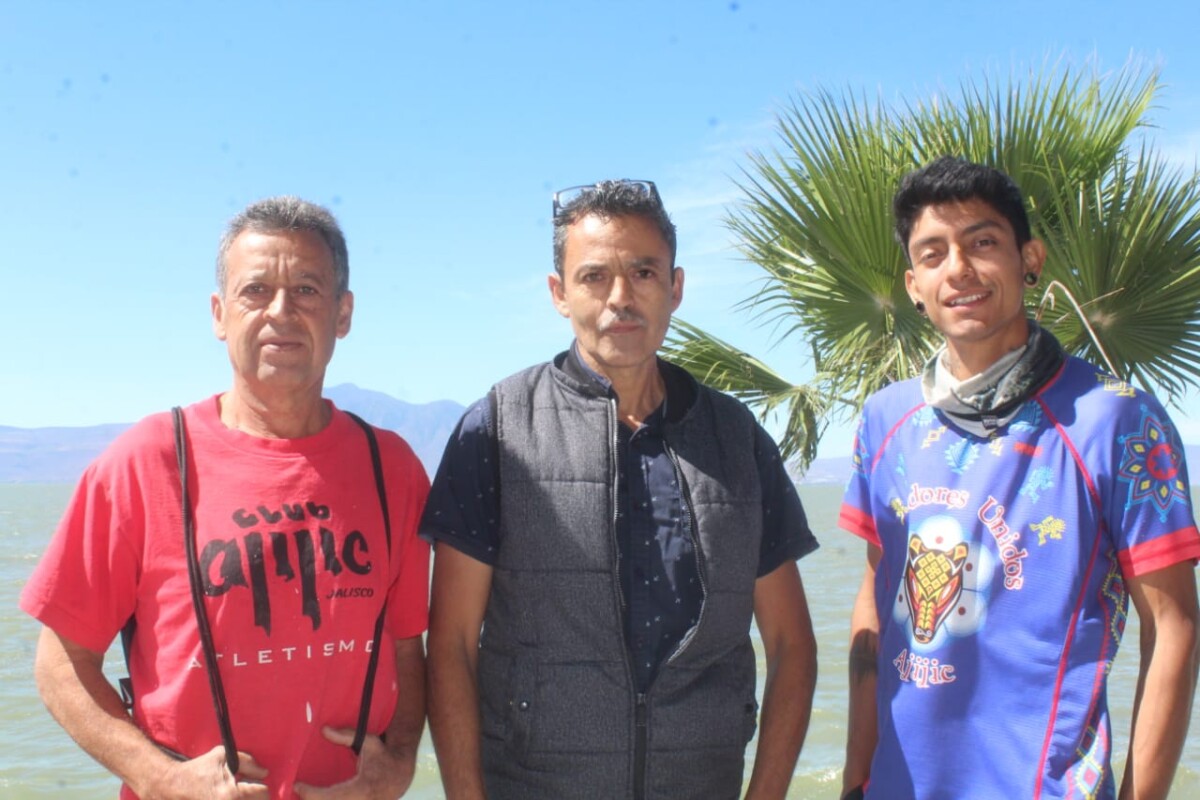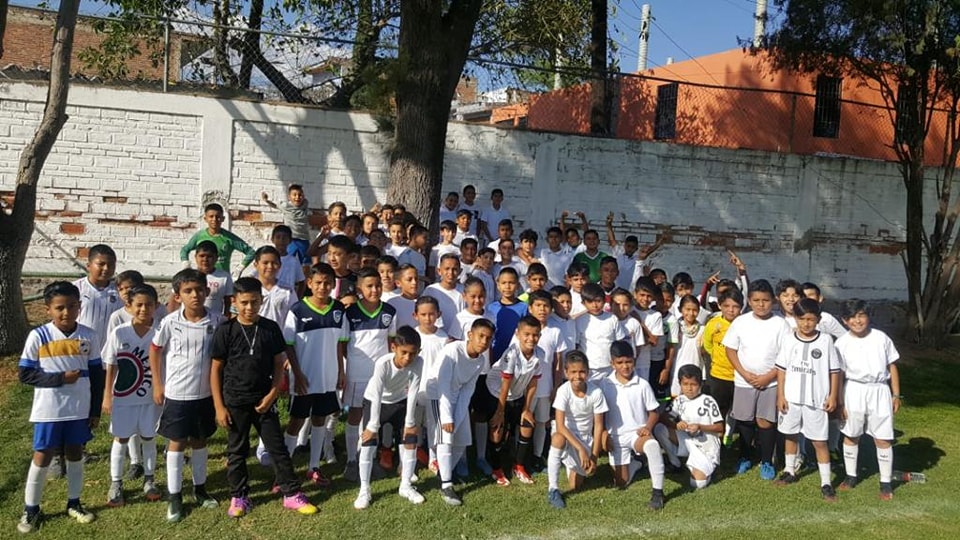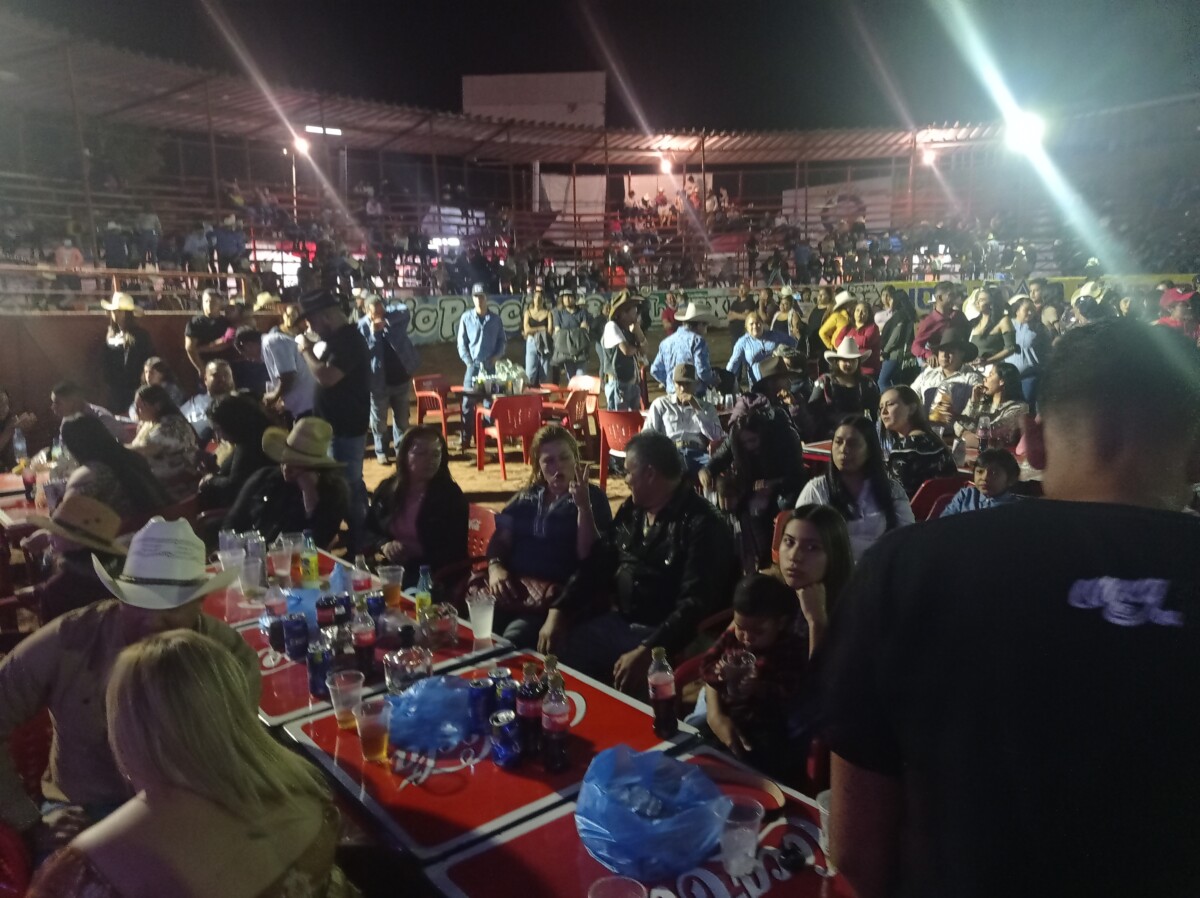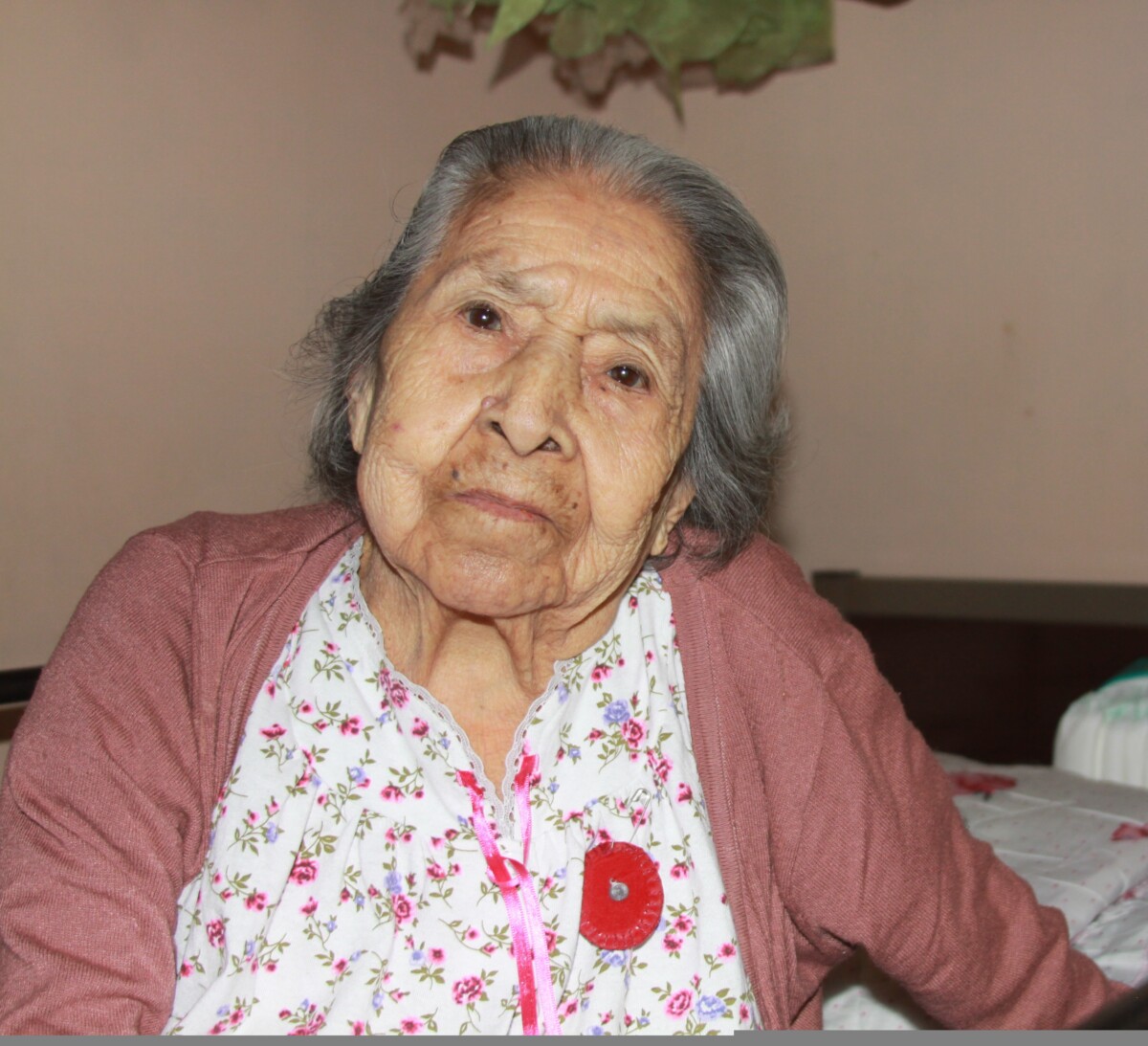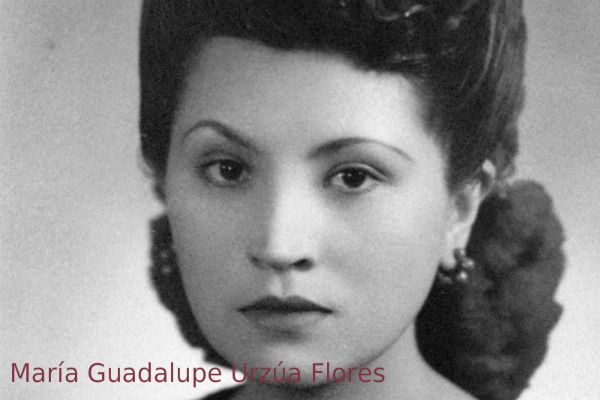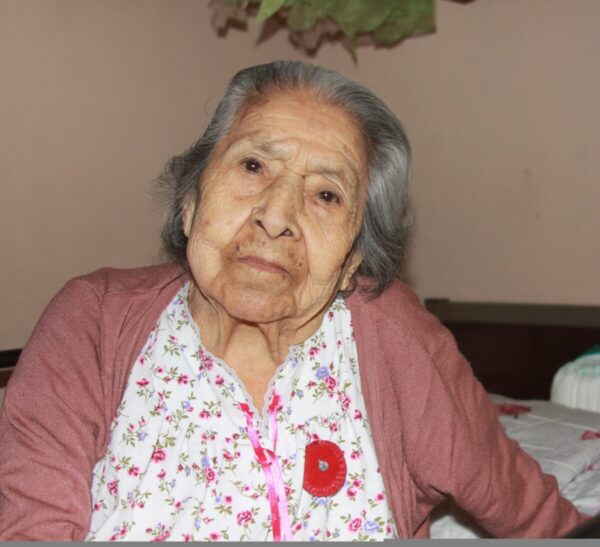ribera
Runners from Ajijic to compete in international race
From left to right: Ricardo González, Alejandro González, director of COMUDE and Aurelio Márquez. Photo: Sofía Medeles
Sofía Medeles (Ajijic).- Two of Ajijic’s own, Aurelio Márquez Rodríguez «Nano» and Ricardo González González «Chicles,» will compete in the international race Ultra Machu Picchu, in Peru, on April 10, 2022.
For Ricardo, 63 years old and with 25 years of running experience, this race is one of many he has run abroad. For Aurelio however, who is 27 years old and has been running for three years, this is the first one he will participate in outside of Mexico. Both will run 30 kilometers; Aurelio «Nano» in the free category and Ricardo «Chicles» in the 60 to 64 years old category.
To support Aurelio with travel expenses, the Corredores Unidos (Runners United) group organized a race last Sunday, March 6, which attracted more than 90 people in the streets of Ajijic. There was also a fair to help raise funds.
For his part, Ricardo González said that he makes a point of putting money aside, so that every two years he can participate in an international race, the last one being in Argentina in 2019.
«On many occasions I have invited different runners to accompany me to international races but Nano (Aurelio) is the first one who showed interest. I invited him because he is one of the best that the town currently has and I like the runners to meet, go out together, meet other good people and make friends,» said Ricardo.
This being his first race abroad, Aurelio admitted he is nervous, but said he will do his best to give a good performance. He also believes that part of growing as a runner is meeting and competing with people better than he is, who motivate him to improve.
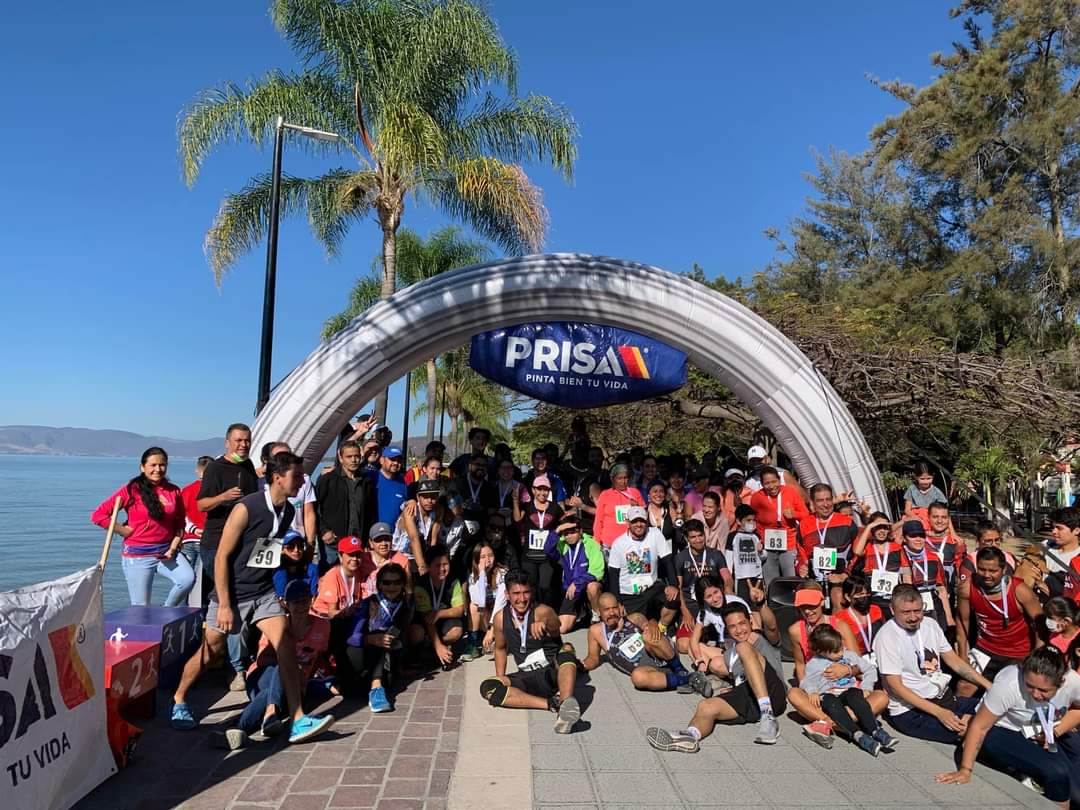
Ninety athletes participated in the race held on March 6 to raise funds for the trip. Photo: Alejandro González
Alejandro Gonzalez Gonzalez, the head of the Municipal Sports Council (COMUDE) Ajijic, said he was willing to support local athletes who show promise, regardless of the sport they practice.
In particular, he noted that the construction of the track at the Unidad Deportiva, located in La Floresta, is continuing so that runners will soon have a safe space to practice.
Ricardo requested that family members of athletes make an effort to support and motivate them in their careers. To the public in general, he reminded them that practicing sports develops good habits in people, such as discipline, saving, healthy eating, etc.
Aurelio invited young people to take up running, and to surround themselves with people who have the same interests in order to feel supported and motivated.
For those who wish to support the runners, donations can be made at the Ajijic delegation.
Translated by Rebecca Zittle
Six Chapala soccer players selected to play for the Chivas club
Children who came to the call for the tryouts, at the Juan Rayo municipal field.
Jazmín Stengel.- Six children were selected by the Chivas de Guadalajara club out of 188 who tried out, after tryouts held on Monday, March 7, at the Juan Rayo Municipal Field in Chapala.
In the first category, 16-year-old Gerson García Ortega qualified in the field, while Eduardo Raygoza Pérez and Juan Diego Ascencio Vilchis of the same age, managed to stay in the red and white goal.
In the youngest category, three campers were selected, Fernando Guadalupe Martínez Casillas and Santiago Gutiérrez González, 12 years old, and Armando Karin Serna Pajarito, only 11 years old, being the youngest.
But the most important thing to qualify for this type of team is to be creative and bring novelty to the game, said Juan Miguel Siordia Vázquez, Chapala’s scouting coordinator.
Translated by Kerry Watson
SALUD Y BIENESTAR EN LA RIBERA
Por Leticia Trejo, Salud y Bienestar
Mucho se insiste en que el Yoga (como sistema) o la Yoga (como disciplina) es una técnica que trabaja cuerpo, mente y espíritu; pero no a todas las personas les queda claro, ya que ubicamos esta práctica sólo como un método más de actividad física, cuando en realidad la práctica de asanas (posturas) es sólo uno de los ocho pasos para lograr los beneficios y la conexión de estos tres elementos que conforman nuestra identidad terrenal.
El Filósofo Patanjali (a quien ya mencioné en alguna publicación pasada) generó la metodología de los ocho brazos del Yoga para lograr la liberación, esto quiere decir, el cese del sufrimiento, y lograr el gozo de la trascendencia; es decir, que ya no hay obstáculos ni en nuestra mente ni en nuestro cuerpo para sentirnos uno con el creador (o universo, o este Ser o Entidad que nos arropa y nos cubre con su amor). Todo esto puede sonar un poco subjetivo, pero cuando revisamos cuáles son esos ocho brazos u ocho etapas, nos damos cuenta de que hace perfecto sentido y que, quien pudiera practicar Yoga en ese orden, con constancia y disciplina va a gozar de todos sus beneficios.
Yamas: son los preceptos éticos y morales de autoobservación para darnos cuenta como es nuestra relación con nuestros semejantes, con el entorno y con los animales y la naturaleza. ¿Qué se pide practicar en los Yamas? Ahimsa, que es la NO violencia; Satya, que es la verdad; Asteya, actuar con honestidad; Brahamacharya, que es la moderación; y Aparigraha, vivir con lo que generemos por nosotros mismos sin aceptar regalos vistos como atajos. Si lo pensamos bien, es claro que uno de los grandes conflictos y obstáculos para ser felices es tener problemas familiares, conflictos entre vecinos, aborrecer a los animales o maltratar a la naturaleza, lo cual genera pesares en la mente y en el corazón.
Niyamas: son los preceptos éticos y morales de autoobservación hacia la relación que tenemos con nosotros mismos. ¿Qué se pide practicar en los Niyamas? Saucha, que es la pureza de intención desde que un pensamiento cruza hacia nuestra mente hasta convertirse en acción; Santosa, contentamiento o gratitud, saber que somos privilegiados por el hecho de estar vivos y sentir; Tapas, prudencia, vivir sabiendo que cada decisión afecta el rumbo de nuestro destino; Svadhyaya, estudio del sí mismo, toda la vida mientras vamos creciendo y madurando aprender a conocernos con honestidad; Isvara pranidhana, dedicación de nuestro trabajo y dones a un Ser superior, al Universo o a algo que va más allá de nosotros.
Asanas: es una serie de posturas físicas en donde la intención es la purificación o desintoxicación constante del cuerpo, para gozar de salud y vitalidad y poder superar adversidades con un cuerpo fuerte y flexible.
Es así como podemos observar que antes de la práctica física, que a muchas personas atrapa, hay dos pasos vitales para liberar a nuestra mente de obstáculos generados por ella misma y la falta de conocimiento que tenemos de sus actividades. En la siguiente edición seguiremos enumerando los pasos de este milenario Sistema lleno de procesos claros y específicos para mejorar nuestra salud física, mental y espiritual.
Falls, injuries from bulls and alcohol consumption treated by firefighters at Carnival 2022
Most people were treated at the Charro events. Lienzo Charro de Chapala during the coronation night of the 2022 Carnival Queen, Feb. 26.
Editor. – Civil Protection and Firefighters of Chapala treated at least 10 people during the Carnival celebration in the municipality of Chapala. The main venues were the municipal seat, the Delegation of Ajijic and Atotonilquillo.
From Feb. 26 to March 1, pre-hospital care was provided in the “lienzos charros” or rodeo rings. Most of the problems firefighters handled resulted from falls, alcohol ingestion and injuries to riders who participated in bull events.
In Chapala
On Friday, Feb. 26, a 20-year-old woman was treated after falling from a height of three meters during the charro event at the Lienzo Charro J. Jesús González Gallo. A 21-year-old woman was treated on Allende Street for an alcohol-related issue, and a 17-year-old girl was treated for an apparent headache.
A 7-year-old boy was taken for evaluation after a fall at the Chapala charro ring on Sunday, Feb. 27. There were 300 people in the place according to Civil Protection estimates and the boy’s grandmother took him to the Red Cross for further treatment.
In Ajijic
A 27-year-old man from San Juan Tecomatlán, municipality of Poncitlán, was hit by a bull during a bull event at the Ajijic charro ring on Monday, Feb. 28. The result was a slight injury to his lips. Civil Protection and Fire Department of Chapala personnel treated him and gave him some recommendations. In the same event, a 25-year-old man from the same town was dragged by the horse he was riding. Firefighters checked him and gave him some recommendations.
On Tuesday, March 1, in the same location, a 23-year-old rider needed stitches due to an injury near the lower part of the abdomen. Although the report does not clarify the size of the wound, nor what caused it, his relatives took him for further treatment. In the same bull handling event, a 27-year-old man from San Juan Tecomatlán, municipality of Poncitlán, was treated for a wound caused by a bull. No details were specified in the report.
In Antotonilquillo
A 43-year-old man who was convulsing was attended by Chapala firefighters in the Lienzo Charro of Atotonilquillo during a charro event on Monday, Feb. 28. The man, from the town of San Miguel Zapotitlán, had his vital signs taken and was given recommendations. Firefighters also treated a 22-year-old rider who attended the charro show in the Atotonilquillo delegation and was injured by a bull on the right side of his head.
Translated by Mike Rogers
Columna: Salud y bienestar en la Ribera
Por Lety Trejo
Cuando no contamos con la información adecuada es difícil darle al organismo lo que necesita para su buen funcionamiento. Hablando del sistema digestivo, uno de los componentes más importantes para su bienestar se encuentra en la microbiota, que antes se conocía como flora intestinal. Estos son los microorganismos, es decir, bacterias, arqueas, aucariotas y virus presentes en todo nuestro organismo; por eso, es importante aclarar que hablamos de la microbiota intestinal. Del equilibrio en estos compuestos depende que nuestro segundo cerebro (intestinos), pueda realizar sus importantes funciones de separar los nutrientes, de los alimentos, de los desechos que éstos generan.
Un entorno intestinal saludable es clave en la prevención de muchas enfermedades, incluso de nuestro equilibrio mental. Por ejemplo, y para ponerlo en palabras menos científicas: las grasas saturadas favorecen el aumento de poblaciones microbianas asociadas a la obesidad. En cambio, los alimentos ricos en fibra insoluble como verduras, el pan integral y las semillas facilitan el crecimiento de bacterias beneficiosas que reducen el sobrepeso (investigación de la revista Gut and Liver). Y según otra investigación realizada por la Universidad de Zaragoza, estos microorganismos regulan los niveles de serotonina, un neurotransmisor relacionado con nuestro estado de ánimo, a mejor producción de serotonina mayor sensación de bienestar.
Existen tres grupos de alimentos de los que debemos alejarnos si queremos mantener una microbiota saludable:
Bollería industrial (demasiada grasa vegetal combinada con harinas de baja calidad).
Helados (también con mucha grasa vegetal y demasiados aditivos para darles una textura cremosa) y ojo, en este rubro entran las mayonesas del super.
Edulcorantes artificiales (el aspartamo es uno de sus principales componentes que incluso se ha comprobado que altera la resistencia a la insulina y dañan a los riñones).
Sería imposible cortar nuestra relación tan cercana con estos alimentos por lo que te aconsejo que lo realices:
Con gradualidad + con constancia + con mucha paciencia
La mejor forma de cuidar al sistema digestivo es saber que somos seres integrales, que la mente afecta al cuerpo y el cuerpo afecta a la mente; y ambos afectan la forma en cómo nos conectamos con el universo, con nuestros semejantes y con nosotros mismos.
Cuando vayas al nutriólogo no vayas con la idea de bajar de peso o verte menos gordo, eso es volver superficial algo que tiene mayor relevancia. ¿Qué te parece si cuando visites a tu nutricionista, lo hagas pensando en que tus intestinos estén sanos y puedas producir grandes cantidades de serotonina y favorecer un estado emocional más positivo? Que tengas un excelente fin de semana.
Lake Chapala down 36 centimeters
Mexico’s largest lake has lost 36 centimeters (about 14 inches) so far during the dry season. Photo: Archive.
So far in the dry season, Lake Chapala has lost 36 centimeters, and is down to 95.75 centimeters, 71 percent of its capacity, according to the National Water Commission (CONAGUA).
Lakeside Chronicles
Francisca Lomelí Rodríguez is 96 years old and has retained all her vivid memories that describe the San Cristóbal of her childhood. Photo by: María Reynozo.
By: María del Refugio Reynozo Medina
Francisca Lomelí was orphaned at the age of eight. School was her life. In the San Cristóbal Zapotitlán of her childhood, classes only went up to third grade. She attended school and she remembers the name of her teacher, Trina.
The school was made of adobe and reed. It was not surrounded by a wall, but by a “wall” of huizaches and nopales (native trees and cactus). In addition to learning how to read, the girls learned how to sew and embroider napkins. They spent a lot of time at school because at noon they went home for lunch and then returned to continue the afternoon’s classes. At the end of the school year, the municipal president, accompanied by the town delegate, would go to see the students’ final work. The teachers would place a sample of the student’s embroidered napkins on display.
Corporal punishment was given by wooden ruler. When students did not finish their homework, they were given a few slaps of the ruler.
The teacher wrote lessons in chalk on a blackboard, using a cloth as an eraser. There were no notebooks. The students would buy a sheet of brown paper and tear it into four parts, and when the pages were worn out on both sides, they would buy another sheet.
Francisca remembers the delegate of that time, Beatriz Chavez’s father. He used to openly carry a gun every day. He was a man who was respected. He paid to have a cobblestone pavement installed in town. Despite looking different today, the plaza was the place to go for prominades and serenades.
Chica, as Francisca is known to the townspeople, remembers the nights of music and the women and men milling around. Some women would carry a “chiquihuite” or palm basket with flowers from their garden and sell them for pennies. It used to be very common for there to be fights on holidays. Men would go around armed with guns or knives. Sometimes as many as three or four people were killed, who were left lying around while the aggressor escaped, as there were no police as there are now. The police, who sometimes appeared, were called «Los Charros» by the people.
The women were guarded carefully by their male siblings and parents, although some, when there were weddings, carried a bottle of punch and danced to the music of the harp.
-We waltzed,» they would say.
Chica remembers “El Vapor,” which was a very large boat that came from Chapala. In the morning, very early, it arrived for the passengers and returned in the afternoon. On its journey over the waves of the waters of Chapala, El Vapor, emitted a high-pitched noise that reached the ears of the locals. It was a strange noise, like in the famous song «La Llorona,» the locals said.
People would come to the shore in the morning to say goodbye to their relatives and watch the boat floating in the water, until it was gone from view. In the afternoon, they would also come to the shore to receive the passengers, who came loaded with packages from errands in Chapala.
The steamboat was the only way out, since there was no highway around the lake in those times. The first streets that were made were called caminos. Everything was surrounded by mountains, so it was difficult traveling over them.
In town of San Cristobal, there was not much to buy. There was a store owned by Arnulfo and Lola Aceves. Everything could be bought by centavos: a centavo of butter, a centavo of salt, a centavo of cheese.
Another man was called Tacho. He sold meat, but not every day. When he was going to slaughter an animal, he would announce himself by standing in the middle of the street rubbing his knives against each other. The sound could be heard for many blocks and people knew that there would be fresh meat that day.
“Tacho is sharpening his knives,» people would think, and they would prepare to go shopping. Pigs and chickens were raised in the houses. On special days people would slaughter the pigs that they had raised. Chica remembers the whiteness of the lard and the smell of pork rinds from the houses, as there is no other smell like it. The pigs roamed the streets and none of them got lost. They could roam all day long and return home in the evening to sleep. Sometimes the sows were heavily pregnant and returned home, accompanied by the piglets walking alongside their mother. The chickens were also on the loose, going to and from their homes.
The water of the lagoon was so clean that the people could drink it. The townspeople went with pitchers to bring it back in order to prepare food and also to drink. Chica remembers that her grandfather had some beehives and extracted a lot of honey from them. He would invite the neighbors to bring a small pot to share his honey with them.
There was an «old boy» (that’s what they called him because he never married), but he was a older man. He sold bread in town.
The church was an old building, made of adobe and tile. Father Prisciliano Michel contributed to its improvement. Chica remembers, when she was a child, that after mass they would bring sand from the cemetery. Everyone cooperated, young and old, with whatever they could, and if they could bring a brick, they contributed.
The villagers contributed to the construction of the temple. There was a lot of religious fervor during Holy Week, remember that the women only made hats until Wednesday because Thursday, Friday and Saturday were days of mourning and fasting. The images hanging on the walls were covered with purple cloth as a sign of mourning. No music was played, and many went to church on their knees in the street. Nor did people ride horses; if they passed a cross, they crossed themselves with reverence and the men took off their hats.
In the town there was no Health Center; Daniel Cervantes was everyone’s doctor, he gave injections, he was very good at curing people. Then a doctor Ureña started to come, and another one was called Dr. Cuervo.
From her bed, Francisca continues talking about her childhood and youth.
It was nice,» she says with a smile.
When I ask her about her husband, she says:
“He was my first and last boyfriend.”
José Reynoso and she never talked, they shortened the distance with messages sent through friends, or with José’s whistles from the street informing her that he had been near. On some occasions her friend Margarita Solano, warned her.
-Chirin, chirin!
She would exclaim from the door and Chica would come out to greet her and raise her hand, while behind her friend’s back, Jose would return her greeting from a distance.
Translated by Colleen Beery
Two Lakeside women recognized on International Women’s Day
María Guadalupe Urzúa Flores was twice mayor of Jocotepec.
The Jalisco State Congress will recognize María Guadalupe Urzúa Flores, from Jocotepec, and Martha Rodríguez García, from Chapala, with the «Hermila Galindo Acosta» award on March 8th, International Women’s Day.
The Commission for Substantive and Gender Equality of the Congress of the State of Jalisco approved honoring ten women from the state, and one civic organization, for their actions in favor of women’s human rights through teaching and research, public service, art and culture, health, gender equality, or civic advocacy.
María Guadalupe Urzúa Flores will receive this distinction post mortem. She was a woman who did not think of herself. Although she did not have material wealth, nor did she marry, she dedicated her entire life to the service of others.
Among her actions as mayor of Jocotepec for two terms were overseeing the installation of cobblestone streets, water wells, roads, electricity, a sports courts, a library, a women’s training academy, a night literacy school for adult men and women, a hospital, the leprosarium, the «Pedro Ogazón» elementary school, the «Miguel Hidalgo y Costilla» high school, and the current regional high school.
Urzua Flores was a friend of several presidents of the republic and governors of Jalisco. She was the first federal deputy for Jalisco from 1955 to 1958 and she was elected to four federal deputies, which allowed the needs of the people to be heard through her voice and her administration.
She was also mayor of San Martin de Hidalgo and managed to establish a high school, recognized by the University of Guadalajara.
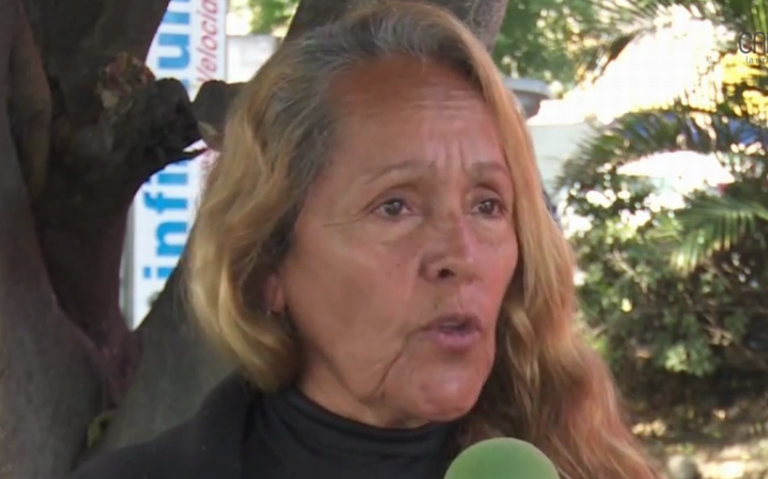
Martha Rodríguez García is a rural social environmentalist leader in the Chapala region.
Another Lakeside woman who will also be recognized on March 8th is Martha Rodríguez García. She is an environmental leader and representative of the rural Lakeside community. She has committed herself to the defense of the environment, rural values and traditions of her community. Her skills and talents were recognized when she was elected as President of the Commissariat of her town in Santa Cruz de la Soledad, municipality of Chapala.
Martha Rodríguez warns all that the growth of an urban development and tourism model is occupying the spaces of the agricultural territories worked by the “ejido” or communal landowners and indigenous people. They have been displaced by real estate and by external interests that are alien to the traditional communal structure. The social fabric of her ejido was damaged because of new real estate development projects.
From her position as an ejido communal landowner, Martha took on the task of compiling a documentary file that traced the history of the community from the endowment of land in 1919, its expansion in 1925 to include164 hectares. 145 of those hectares belong to the Cerro del Junco, a hill that is home to important species of flora and fauna, and from whose summit the Colima Volcano can be seen.
With this documentation in hand, Martha has undertaken defending the heritage of her community. She has worked to decree the land as a Natural Protected Area, guaranteeing that the ejido’s will will be followed. She also has worked for the integration of an Ecological Land Management Plan for the Lake Chapala Lakeshore in the hope it will attract projects, such as those developed with technical assistance and support from Aipromades Lago de Chapala, obtain funding from the United Nations Development Program for the restoration of Cerro del Junco, and the participation of the Coca-Cola Foundation and Arca Continental as partners in the project.
Translated by Colleen Beery
Francisca Lomelí Rodríguez: memorias de una mujer casi centenaria
Francisca Lomelí Rodríguez tiene 96 años y todos sus recuerdos vivos que dibujan el San Cristóbal de su infancia. Foto: María Reynozo.
María del Refugio Reynozo Medina .- Francisca Lomelí quedó huérfana a los ocho años. La vida fue su escuela; en el San Cristóbal Zapotitlán de su infancia, las clases llegaban hasta tercero de primaria, ella asistió; recuerda el nombre de su maestra, se llamaba Trina.
La escuela era de adobe y carrizo, no estaba rodeada por un muro sino por un monte lleno de huizaches y nopales. Además de leer, las niñas aprendían a hacer costuras, bordaban servilletas y transcurrían mucho tiempo en la escuela, pues al medio día iban a comer a casa y volvían para continuar la jornada de clases. Para el fin de ciclo escolar, el presidente municipal iba a ver los trabajos finales acompañado del delegado del pueblo; sus maestras colocaban como galería una muestra de las servilletas para la exhibición.
La disciplina se aplicaba con una regla de madera, cuando no terminaban con las tareas les daban unos cuantos reglazos.
En el salón, había una pizarra negra donde la maestra daba las lecciones con la tiza y una tela como borrador. No había cuadernos, les compraban un pliego de papel estraza y lo partían en cuatro partes, cuando las páginas estaban gastadas por ambos lados, compraban otra hoja.
La plaza era solo un espacio parejo de tierra, Francisca recuerda al delegado de entonces, era el papá de Beatriz Chávez; diario traía pistola, era un hombre que se respetaba. Él mandó hacer un empedrado. Aún sin la forma que hoy tiene la plaza, en aquel entonces era el lugar para la reunión de las serenatas.
Chica, como es conocida por los vecinos del pueblo, recuerda las noches de música y las mujeres y hombres dando vueltas. Algunas mujeres llevaban un chiquihuite con flores de su jardín y las vendían a centavo. Antes era muy común que hubiera pleitos en los días de fiesta, los hombres andaban armados con pistola o con navajas. A veces resultaban hasta tres o cuatro muertos, que quedaban tirados mientras que el agresor escapaba, no había policía como ahora. A la policía, que a veces comparecía, la gente les decía los charros.
Las mujeres tenían una vigilancia muy rigurosa por parte de sus hermanos varones y padres, aunque algunas, cuando había bodas, llevaban una botella de ponche y bailaban con el arpa.
-Anduvimos valsando- decían.
Chica recuerda El vapor, que era una lancha muy grande que venía de Chapala. En la mañana, muy temprano, llegaba por los pasajeros y regresaba en la tarde. En su recorrido sobre las olas de las aguas de Chapala, El Vapor, emitía un ruido agudo que llegaba a los oídos de los lugareños. Era un ruido extraño, como la llorona, decían los pobladores.
La gente se acercaba a la orilla en la mañana para despedir a sus familiares y ver flotando en el agua la lancha, hasta que se perdía. En la tarde, también acudían a la orilla para recibir a los pasajeros que venían cargados de mandado que traían de Chapala.
El vapor era la única vía para salir, pues no había carretera aún; a las primeras calles que se formaron les decían camino. Todo estaba rodeado de monte.
En el pueblo, no había mucho donde comprar; había una tienda de un señor llamado Arnulfo y Lola Aceves, todo se podía comprar por un centavo. Un centavo de manteca, un centavo de sal, de queso.
Tacho le decían a otro señor, él vendía carne, pero no todos los días; cuando iba a matar se anunciaba parándose a media calle restregando los cuchillos, uno con otro. El sonido se escuchaba a muchas cuadras y la gente sabía que ese día habría carne fresca.
-Tacho ya está tronando los cuchillos- y preparaban sus platos para ir a comprar. En las casas se criaban puercos y gallinas. En días especiales las personas mataban a sus puercos que habían criado por mucho tiempo; Chica recuerda la blancura de la manteca y el olor a chicharrones de las casas como ya no hay otro igual. Los puercos andaban por las calles y ninguno se perdía, podían andar durante todo el día merodeando y volver caída la tarde a dormir a casa. A veces las puercas iban cargadas con sus crías en el vientre y regresaban acompañadas con los cerditos caminando. También los pollos andaban sueltos, iban y volvían a su casa.
El agua de la laguna era tan limpia que podía beberse, iban con cántaros a traerla para preparar la comida y para tomar. Recuerda que su abuelo tenía unas colmenas y sacaba mucha miel, salía por su puerta de golpe para invitar a los vecinos que trajeran una ollita para darles tacos de miel.
Había un “muchacho viejo” así le decían porque no se casó, pero era señorito. Él vendía pan.
El templo era una construcción viejita, de adobe y teja, hasta había alicantes alrededor y tecolotes merodeando.
El padre Prisciliano Michel, contribuyó a su mejora.
Recuerda Chica, cuando niña, que saliendo de misa iban a traer arena del rumbo del panteón. Todos cooperaban, chicos y grandes, con lo que podían, si se podía llevar un ladrillo, eso se aportaba. También trabajaron el soyate para hacer la trenza, el chicote, copa, ribete, falda y forro, que eran las partes para armar sombreros.
Los pobladores contribuyeron para la construcción del templo. Había mucho fervor religioso, durante la Semana Santa, recuerda que las mujeres solo torteaban hasta el miércoles porque el jueves, viernes y sábado eran días de guardar luto y se ayunaba. Las imágenes que colgaban de las paredes se cubrían con alguna tela morada en señal de duelo. No se escuchaba música, y muchos acudían al templo avanzando de rodillas por la calle. Tampoco se montaba a caballo, si se encontraba uno con una cruz, se persignaba con reverencia y los hombres se sacaban el sombrero.
En el pueblo no había Centro de Salud; Daniel Cervantes era el médico de todos, ponía inyecciones, era muy bueno para curar. Luego ya empezó a venir un doctor Ureña, y el doctor Cuervo le decían a otro.
Desde su cama; Francisca, sigue conversando de sus días de infancia y juventud.
- Era bonito- dice con una sonrisa.
Cuando le pregunto de su esposo, dice:
-Fue mi primero y último novio-
José Reynoso y ella, nunca platicaron, acortaron la distancia con recaditos que se mandaban a través de amigos, o con chiflidos por parte de José desde la calle que le informaban que había estado cerca. En algunas ocasiones su amiga Margarita Solano, le avisaba.
-¡Chirin, chirin!
Exclamaba, desde la puerta y Chica salía a saludarla y levantaba la mano, mientras a espaldas de su amiga, José le regresaba el saludo a distancia.
Luego se metían corriendo para no ser descubiertas.
-Dicen que me parezco a mi abuela Heliodora- me dice Chica que no se cansa de contar.
Yo no sé cómo era Heliodora, pero lo cierto es que Chica tiene unos ojitos vivaces que me recuerdan a mi abuelo, sobre un rostro encendido labrado de arrugas que cuentan mucho.
Sus añoranzas están vivas y dibujan el pueblo que fue, aunque ya no pueda recorrer caminando los patios que de joven convirtió en veredas floridas.
Reconocerá el Congreso del Estado a dos ribereñas en el Día de la Mujer
María Guadalupe Urzúa Flores fue la primera diputada federal de Jalisco y alcaldesa en dos ocasiones de Jocotepec.
Redacción .- El Congreso del Estado de Jalisco reconocerá a María Guadalupe Urzúa Flores, de Jocotepec, y a Martha Rodríguez García, de Chapala, con el distintivo “Hermila Galindo Acosta” este ocho de marzo, Día de la Mujer.
La Comisión de Igualdad Sustantiva y de Género del Congreso del Estado de Jalisco aprobó homenajear a diez mujeres del estado y una organización civil por sus acciones realizadas en favor de los derechos humanos de las mujeres, a través de la docencia e investigación, la función pública, el arte y la cultura, la salud, la igualdad de género o la participación ciudadana.
Es así como María Guadalupe Urzúa Flores recibirá esta distinción de manera post mortem, por haber sido una mujer que no pensó en sí misma, que no gozó de riquezas materiales ni de matrimonio, porque dedicó toda su vida entera al servicio de los demás.
Entre sus acciones destacan empedrados, pozos de agua, caminos, luz eléctrica, canchas deportivas, una biblioteca, academias femeniles de capacitación, una escuela nocturna de alfabetización para adultos hombres y mujeres, el hospital, el leprosario, la escuela primaria “Pedro Ogazón”, la secundaria “Miguel Hidalgo y Costilla”, y la actual preparatoria regional que gestionó para Jocotepec siendo alcaldesa por dos ocasiones.
Entre sus particularidades destaca que fue amiga de varios presidentes de la república y gobernadores de Jalisco. Fue la primera diputada federal por Jalisco de 1955 a 1958 y llegó a ocupar cuatro diputaciones federales, lo que permitió que las necesidades de la gente se escucharan a través de su voz y su gestión.
También fue alcaldesa de San Martín de Hidalgo y logró gestionar una preparatoria de la Universidad de Guadalajara para esta demarcación.

Martha Rodríguez García es una líder social ambientalista, defensora del territorio en Chapala.
Otra ribereña quien también será reconocida con la mencionada distinción es Martha Rodríguez García, líder social ambientalista, representante de la ruralidad ribereña, que desarrolló su proyecto personal en la cultura del esfuerzo, comprometiéndose con la defensa del territorio, los valores rurales y las tradiciones de su comunidad; valores que le fueron reconocidos al ser elegida como Presidenta del Comisariado de su pueblo en Santa Cruz de la Soledad, municipio de Chapala.
Martha Rodríguez, advirtió que el crecimiento de un modelo urbanizador y turístico fue ocupando los espacios de los territorios agrícolas trabajados por ejidatarios e indígenas, que fueron desplazados por la voracidad inmobiliaria y por los intereses externos y ajenos a la estructura tradicional comunal.
El tejido social de su ejido se vulneró al dividirse sus integrantes ante las alternativas de instalar proyectos de desarrollo productivo e inmobiliario.
Desde su entendimiento como ejidataria, Martha se dio a la tarea de integrar un expediente documental que ubicó la historia de la comunidad desde la dotación de terrenos en 1919, su ampliación en 1925 y la definición de su extensión de 164 hectáreas, de las cuales, 145 corresponden al Cerro del Junco, un lomerío que alberga importantes especies de flora y fauna y desde cuya cima se alcanza a divisar el Volcán de Colima.
Con esta carpeta bajo el brazo, ha emprendido una lucha de resistencia para defender este patrimonio de su comunidad, participando en las gestiones para su decreto como Área Natural Protegida, en la consulta pública que garantizase la voluntad del ejido en los procesos de decreto como Área Natural Protegida y en la integración de un Plan de Ordenamiento Ecológico del Territorio para la Ribera del Lago de Chapala; y en la atracción de proyectos, como los que ha desarrollado con asistencia técnica y apoyo de Aipromades Lago de Chapala, alcanzando un financiamiento del Programa de Naciones Unidas para el Desarrollo para la restauración del cerro del Junco, y la participación de Fundación Coca Cola y Arca Continental como entidades asociadas al proyecto.
© 2016. Todos los derechos reservados. Semanario de la Ribera de Chapala
